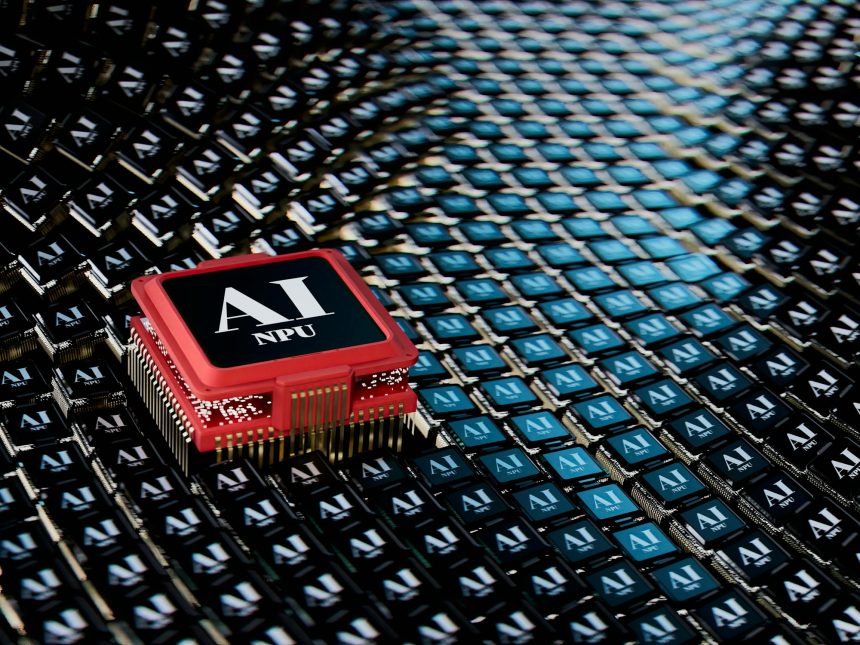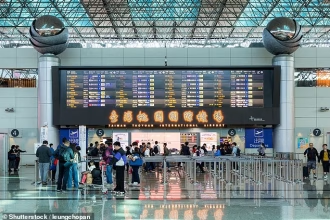Growth in semiconductors used to track closely with consumer markets, smartphones, PCs, cars, and smart gadgets. These products once drove the bulk of chip demand. But the AI age is changing everything.
As the AI boom continues to grow, the semiconductor industry is barreling toward a new milestone it has never reached before.
According to IDC, the global revenue in the semiconductor industry as a whole is set to reach $800 billion in 2025, an almost 18% jump from 2024’s $680 billion. That double-digit figure comes after an already spectacular rebound in 2024, when revenue surged by more than 22%.
What’s fueling this surge is no longer smartphones or PCs; it is the relentless appetite for AI datacenter chips, the engines powering today’s most ambitious digital revolutions and other AI-related use cases.
As the AI boom prompts an unprecedented hunger in different sectors, semiconductors are moving from just being the backbone of modern devices to becoming the lifeblood of a global AI economy.
The Engines of Semiconductor Demand
The biggest driver of this transformation is data centers, which have emerged as the beating heart of the tech industry today. As companies race to build AI infrastructure for cloud and high-performance computing at unprecedented scale, this demand is driving explosive growth in compute semiconductors. IDC projects this segment to grow by 36% in 2025, reaching $349 billion, with strong momentum expected well into the next decade. Supporting technologies like rack-scale systems, advanced memory, and high-speed interconnects are also benefiting from this AI-fueled momentum.
Meanwhile, the rise of AI workloads has also moved the bottleneck from processors to data movement. That’s driving demand for networking semiconductors, which help overcome latency and throughput challenges. Which is why cloud providers, telcos, and enterprises are investing heavily in chips that accelerate data movement. As such, networking semiconductors are expected to grow 13% in 2025, led by Ethernet switches, optical interconnects, and specialized processors like SmartNICs and DPUs. These components don’t just improve efficiency; they redefine how data flows within the data center, removing barriers to AI training and inference at scale.
On the consumer side, smartphones and PCs aren’t shipping in bigger numbers, but each device is becoming a denser block of silicon. With increasing semiconductor content per device, driven by 5G adoption, AI-enabled features, and richer multimedia, wireless semiconductors are projected to rise by 5% in 2025 as phones incorporate more NPUs, GPUs, and advanced connectivity for AI-driven features. Rising average selling prices are also helping lift revenue, though looming tariffs and trade restrictions could complicate the picture in 2026.
Of course, the story doesn’t end with AI datacenters. Other sectors, although slower to recover, are regaining their footing. The automotive semiconductor market, which struggled with excess inventory and trade headwinds, is set for a modest 3% growth in 2025. The recovery may be cautious, but underlying drivers—such as electrification, SiC and GaN adoption, and the shift toward software-defined vehicles—are ensuring a steady climb.
Meanwhile, the industrial semiconductor market is experiencing a stronger revival. After a steep decline in 2024, it is forecast to grow 11% in 2025, up from a decline of 13.9% in 2024, supported by demand from aerospace, manufacturing, edge AI, and the broader electrification wave.
“2025 continues the strong growth from 2024, but markets that declined in 2024 such as automotive and industrial, are only now starting to recover,” said Nina Turner, research director, Semiconductors at IDC. “While these markets are not experiencing the explosive growth of the datacenter, the increase in semiconductor content per system, increased compute capabilities, and electrification will help ensure long term revenue resilience.” said Mario Morales, group vice president, Semiconductors at IDC.
Big Winners of the AI/Semiconductor Boom
This growth we are seeing across these different industries is supercharging semiconductor leaders, driving them to achieve valuations never seen before in the industry.
To projects that one semiconductor giant is projected to cross the $200 billion revenue mark in 2025, for the first time ever, powered almost entirely by the insatiable demand for AI datacenter chips.
Judging by numbers, NVIDIA is the standout. Its fiscal 2025 revenue hit $130.5 billion, more than doubling year-over-year, primarily driven by its AI datacenter chips. That kind of growth has pushed its market cap to over $4 trillion, making it one of the most valuable companies on earth.
TSMC, the world’s top foundry, is also riding this wave. With double-digit revenue growth through 2025 and near-full booking of its most advanced capacity, it has cemented its position as the indispensable partner for AI chipmakers.
Even memory leaders like Samsung are cashing in. Its Device Solutions division has sharply rebounded from the downturn that hit the industry in 2023–24, fueled by hot demand for high-bandwidth AI DRAM and HBM to feed AI workloads.
Even equipment makers such as ASML, which supply the lithography machines that produce these chips, are seeing booming revenues.
Forget TSMC or Nvidia! This Dutch company quietly controls the global chip industry
Even as Taiwan and China are the largest chip-manufacturing countries in the world.
Conclusion
Put it all together, and the trajectory is unmistakable. Semiconductors are transitioning from being just components of consumer devices to the foundation of the AI-driven economy. They’re powering data centers, high-performance computing, and the infrastructure of intelligence itself.
AI has pulled the industry into a new phase where every part of the value chain, processors, memory, networking, and even the machines that build the chips, is riding the wave
With revenues set to approach $800 billion in 2025, and IDC forecasting a trillion-dollar market by 2028, two years faster than consensus, the semiconductor industry is powering into its strongest era yet.
Mario Morales captures the bigger picture even more sharply:
“The semiconductor industry is entering a new era of growth, fueled by the datacenter buildout to support AI workloads. Explosive demand for compute and networking at scale is creating a step-function in revenue growth, while adjacent markets from cloud to connectivity benefit from the shift to rack-scale systems, allowing semiconductor suppliers to move up the value stack. “
In an AI-driven age, semiconductors are now setting the pace.


















